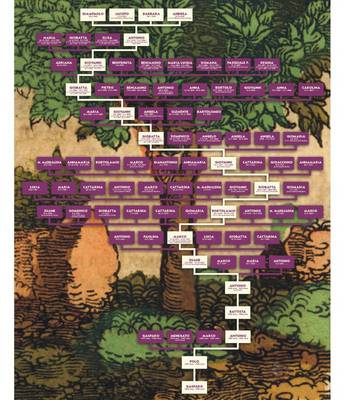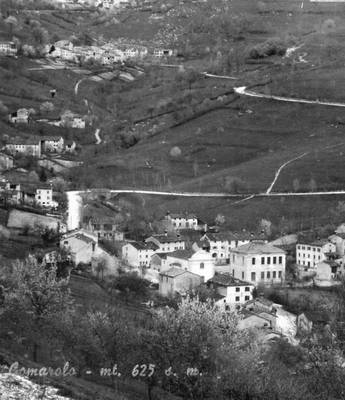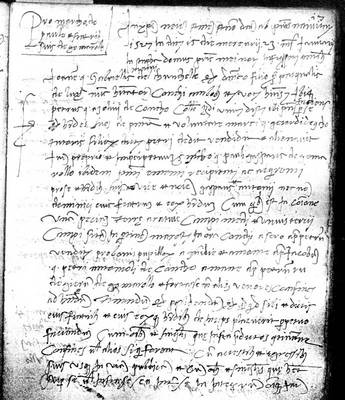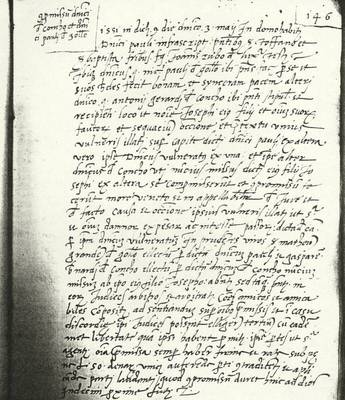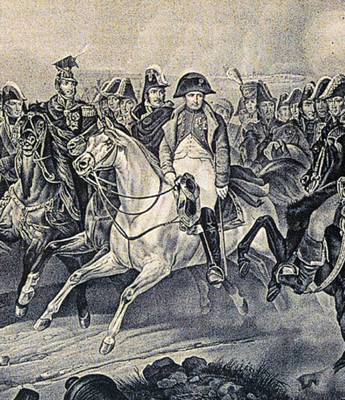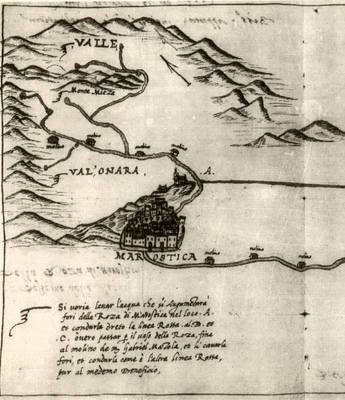History of a Veneto family
You don't have to go far to find the place of origin of the Poli family. The hills above Marostica, and more precisely the hamlet of Gomarolo, were the cradle of Paulus, commonly known as "Polo", the son of Pietro (c.1450-1520) and the founder of the line, because it was from him that the family took the name of "Poli" or son, the descendant of Polo.
Previously his family was called "dei Gaspari", a name deriving from Gasparo, Polo’s grandfather, who Iived from 1390 and 1460, give or take a year.
<< Poli family tree
The family most probably reached these hills from the plain or from the Vicenza foothills, moving between the 13th and 14th centuries to Gomarolo after an advantageous offer from a local owner of farmlands that needed to be constantly cultivated, or wooded lands to be tilled.
Pietro di Gasparo, Polo's father, was quite well-off in those times, since he collected dues
<< Gomarolo, the place of origin of the Poli family.
Now included in the municipality of Conco, for a long time Gomarolo was a locality of the ward of Roveredo Alto, in the municipality of Marostica. In the background the church of Conco, where entire generations of the Poli family received Holy Sacraments, at least until 1768, when the parish of Fontanelle, the locality where the Poli family lived, was created.
and had various properties, subsequently inherited by his many sons.
On the death of his father (c. 1485), Polo became the inspirer of the family, entering into various contracts, also in the name of his brother Giovanni and the orphaned nephews of his other brothers Antonio and Domenico.
<< 23rd January 1527
The brothers Marco, Gaspare, Antonio and Domenico the sons of Paolo of Gaspare from Gomarolo purchased from Pietro, the son of Azzelino from Conco a piece of arable land situated in Conco (A.S.V., Not. Vic. GioBatta son of Marco from Conco, file 6643, ff. 17r-18v). In those days, in order to identify persons, the patronymic system was used, with the name of the father; thus in 1527 Gasparo, Menegato, Marco and Antonio Poli were called "the son of Paolo" (Poli, Latin genitive "of Paul"), an expression that was not yet considered a surname.
He thus earned such an aura of authority that made him a leader in the community, to the point that his first name became the surname which qualified blood relations and all their descendants.
They soon stood out for their unity and for their... numbers: after the death of Polo, which occurred around 1520, his sons Gasparo, Domenico (called Menegato), Marco and
<< 3rd May 1551
Settling of a dispute between Domenico the son of Nicolò Poli from Gomarolo and Domenico the son of Antonio Girardi from Conco. The real surname Poli appeared in 1551, and was that of Domenico Poli the son of Nicolò. His name was no longer “Domenico the son of Paolo”, but Dominicus Pauli, or Domenico Poli.
Antonio became actively involved in buying land and other properties, thus demonstrating the vigour of a family whose members were indifferently called "de Polo", "Polli" or "Poli", meaning that the surname was becoming established.
The descendants of Polo between the 16th to the 17th century, worked the land and reared sheep and cattle, with alternating profit and fortune.
<< Napoleon in the Battle of the Brenta river
Rapresentation of the “Battle of the Brenta river” or of Nove on 6th November 1796 between Napoleon and the Austrian army, when the old Venetian Republic, the "Serenissima" was in its dying days: in that year the Poli family lived in Molvena, just a few kilometres from the scene of the battle. (Bassano del Grappa Civic Museum)
Among them was Marco, who moved to nearby Fontanelle and died in 1724 at the age of 93.
The enduring permanency in those districts ended with his great-grandson Giovanni (1763-1823), who had a restless existence which led him to move to Molvena and Laverda, before dying in San Luca in the arms of his son GioBatta.
<< The territory of Marostica
The Scaliger castle and the town walls of Marostica were built in the 14th century and represented an ideal launching pad for the migration of men and means, which occurred above all starting from, 1290, the date when the mountain of Conco and the neighbouring districts were included in the jurisdiction of Marostica. Also among these men was most probably Polo, the direct forefather of the Poli family. (Old map of 1583. State Archive of Venice Uncultivated Property)

